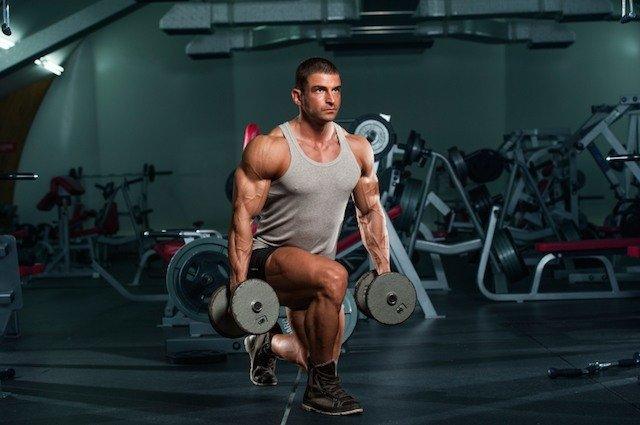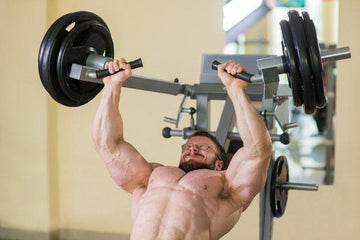

Best Leg Exercise You're Not Doing!
Table of Contents
Split Squat: Best Leg Exercise?
If you ask any athlete what the king of leg exercises is, many will say, “the squat.” For years, bodybuilders have used the squat to build strength and size, but many lifters are plagued with knee, hip, and back issues that prevent them from doing squats. The split squat can be performed with the back foot planted on the ground, or with the back foot elevated onto a bench or box. The split squat includes variations known as the Bulgarian (split) squat, the rear foot elevated split squat, and pitcher squat or modified unilateral squat.
Researchers wanted to compare the muscle activity of the legs including the gluteus maximus, biceps femoris, semitendinosus, rectus femoris, vastus lateralis, vastus medialis, tibialis anterior, and medial gastrocnemius (using surface electrodes placed all over the legs) in conventional back squats and rear-foot elevated split squats, and split squats. Load for back squat was 85% one repetition maximum, and rear-leg elevated split squats and split squats were performed at 50% of the back squat weight. Many would probably think the squat would activate more muscle fibers than a single leg split squat, but that’s not what the researchers found. The researchers reported that there was no significant difference in EMG activity between the two exercises for all muscles except the biceps femoris, which was significantly higher during rear-foot elevated split squats than during split squats in both concentric and eccentric phases, and considerably higher during back squats than during split squats in the concentric phase only.
The researchers concluded that rear-foot elevated split squats involve similar lower body muscle activation to conventional barbell back squats while using 50% of the load but also display increased biceps femoris activity. They may, therefore, be a useful alternative exercise for individuals who are unable to perform conventional back squat exercises. These findings may be helpful in designing resistance-training programs by using rear leg elevated split squats if greater biceps femoris activity is desired. The really cool part of this study was that they showed that performing a split squat with 50% of the load one would use for a back squat resulted in similar muscle activation of the legs, and as a bonus, led to greater hamstring activation.
Split Squats has gotten a bad rep as being an accessory exercise, but new research reports that the split squat can be just as effective as a full squat. Researchers investigated the effects of a five-week lower limb unilateral or bilateral strength program on measures of strength, sprinting and change of direction speed.
Eighteen academy rugby players were randomly assigned to either a unilateral or bilateral group. The unilateral group squatted exclusively with the rear elevated split squat, whereas the bilateral group trained only with the bilateral back squat. Both groups trained at a relative percentage of the respective one repetition max (1RM) twice weekly over a five-week period. Subjects were assessed at baseline and post-intervention for 1RM back squat, 1RM rear elevated split squat, 10m sprint, 40m sprint and Pro agility.
The results showed that both the bilateral group and unilateral group significantly improved all performance and strength tests with no significant differences between groups. This is the first study to suggest that bilateral and unilateral leg training may be equally training in improving measures of lower body strength, 40m speed, and change of direction in academy level rugby players.
Muscle activity in single- vs. double-leg squats, by DeForest, Cantrell, and Schilling, in International Journal of Exercise Science (2014).
Speirs, D.E., Bennet, M., Finn, C.V., Turner, A.P. Unilateral vs bilateral squat training for strength, sprints and agility in academy rugby players. Journal of Strength & Conditioning Research. 2015. Published Ahead of Print.

















